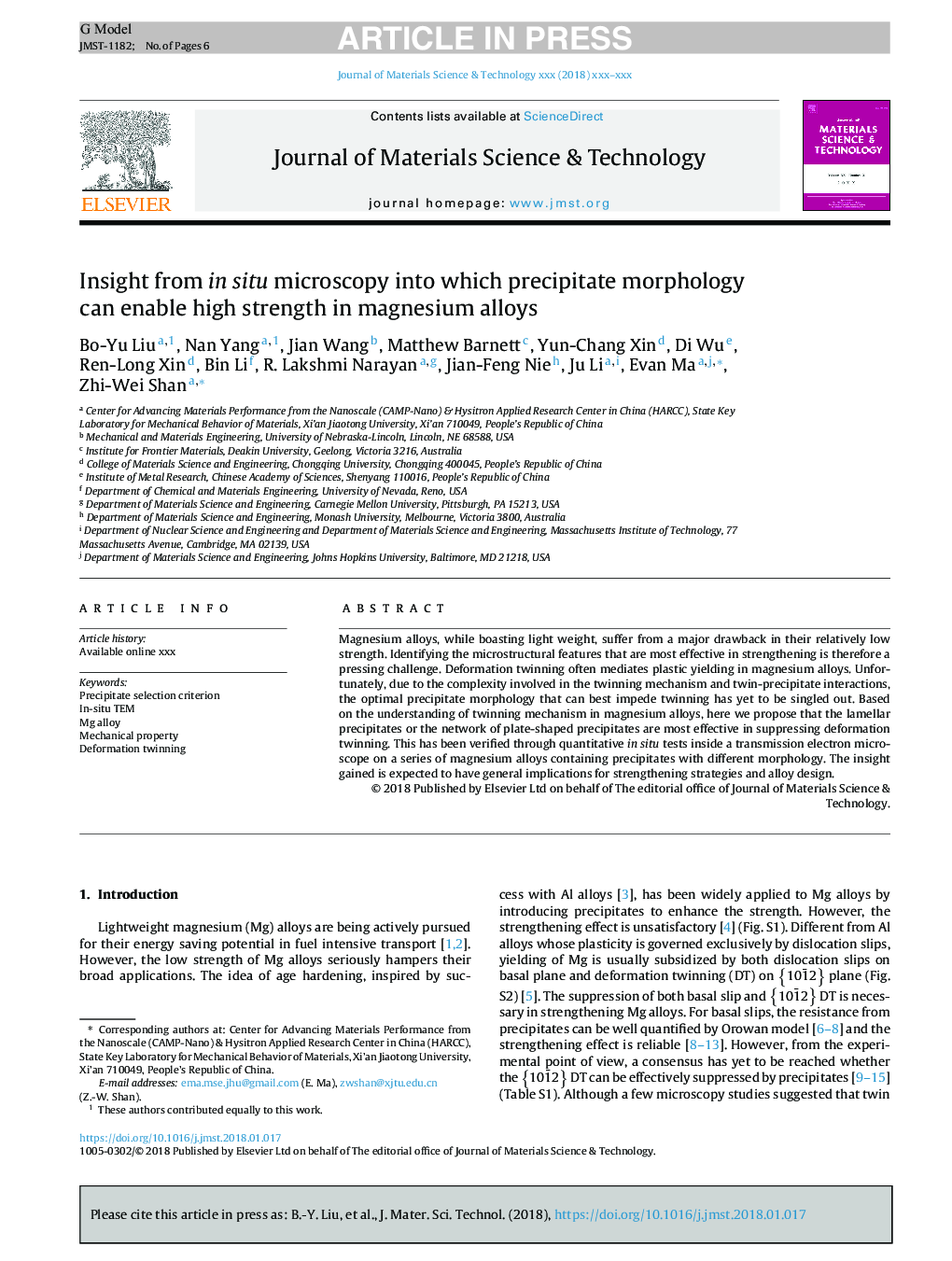| Article ID | Journal | Published Year | Pages | File Type |
|---|---|---|---|---|
| 7951940 | Journal of Materials Science & Technology | 2018 | 6 Pages |
Abstract
Magnesium alloys, while boasting light weight, suffer from a major drawback in their relatively low strength. Identifying the microstructural features that are most effective in strengthening is therefore a pressing challenge. Deformation twinning often mediates plastic yielding in magnesium alloys. Unfortunately, due to the complexity involved in the twinning mechanism and twin-precipitate interactions, the optimal precipitate morphology that can best impede twinning has yet to be singled out. Based on the understanding of twinning mechanism in magnesium alloys, here we propose that the lamellar precipitates or the network of plate-shaped precipitates are most effective in suppressing deformation twinning. This has been verified through quantitative in situ tests inside a transmission electron microscope on a series of magnesium alloys containing precipitates with different morphology. The insight gained is expected to have general implications for strengthening strategies and alloy design.
Related Topics
Physical Sciences and Engineering
Materials Science
Materials Chemistry
Authors
Bo-Yu Liu, Nan Yang, Jian Wang, Matthew Barnett, Yun-Chang Xin, Di Wu, Ren-Long Xin, Bin Li, R. Lakshmi Narayan, Jian-Feng Nie, Ju Li, Evan Ma, Zhi-Wei Shan,
